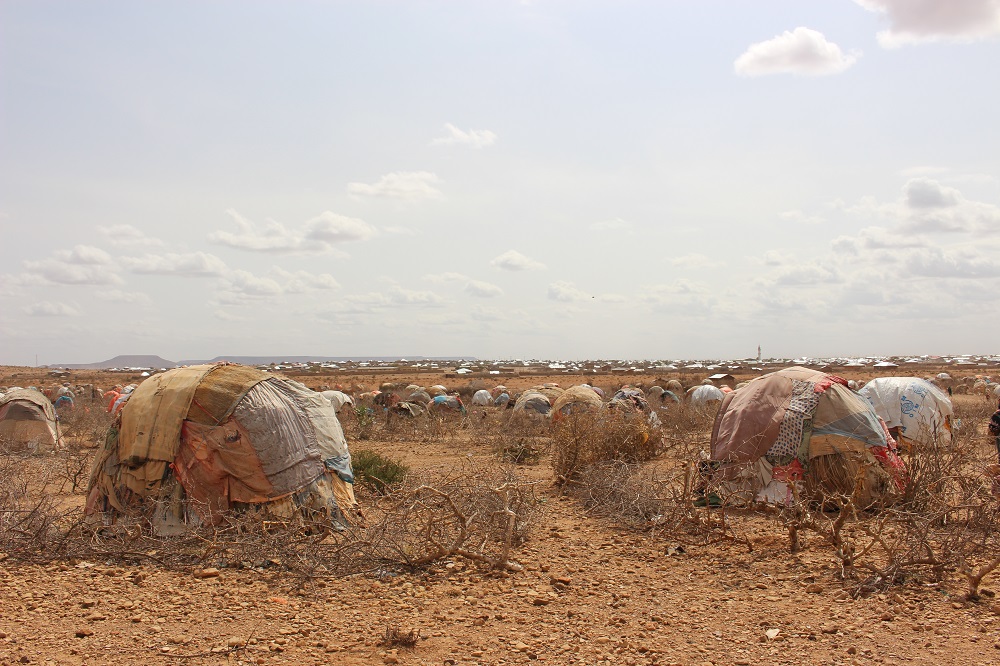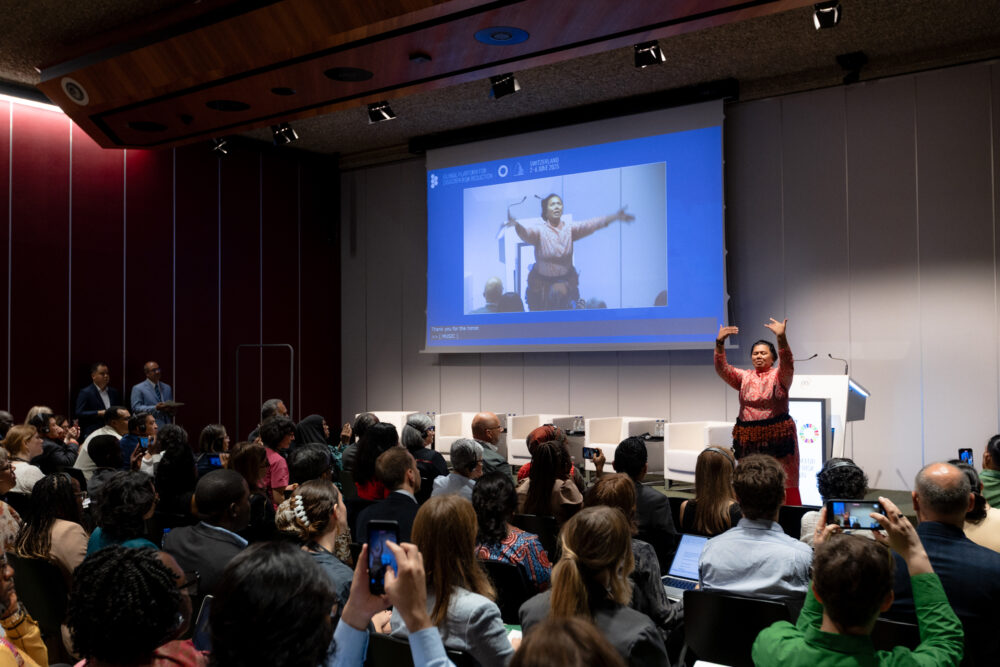“If we look at the magnitude of the problem, to do more of the same is simply not good enough”
In late 2019, the UN Secretary-General established the High-Level Panel on Internal Displacement to find solutions to the global internal displacement crisis. The Panel is tasked with increasing global attention to the issue and developing concrete recommendations for Member States, the UN system and other stakeholders on how to better prevent, respond, and achieve solutions to internal displacement, including due to disasters and the adverse effects of climate change. Responding to the Panel’s call for inputs from stakeholders, the Envoy of the Chair of the Platform on Disaster Displacement (PDD), Prof. Walter Kaelin, contributed a written submission to the Panel on Internal Displacement in the Context of Disaster and the Adverse Effects of Climate Change. The submission identifies the key challenges, outlines what States and other actors are expected to do, and makes suggestions on how to improve prevention, preparedness, response, and solutions, including innovative out-of-the-box approaches. Prof. Kaelin, eminent expert on internal displacement, gives us an insight into the issue, the submission, and more.
PDD Secretariat: What are the main challenges faced by people internally displaced in the context of disasters and climate change?
Prof. Walter Kaelin: Some challenges are similar to those faced by internally displaced persons in conflict situations. Displaced survivors of natural hazards such as tropical storms, flooding, earthquakes or droughts turned into famine need emergency assistance such as food, water, shelter and health services. Where internal displacement becomes protracted, internally displaced persons may face sexual and gender-based violence in overcrowded camps and shelters, forced evictions from shelters, or problems because they have lost identity cards, property titles and other documentation that cannot be easily replaced. Finally, they need to find durable solutions allowing them to rebuild their lives. This is particularly difficult where they cannot return to their former homes and need to be relocated or moved elsewhere. Internally displaced pastoralists face particular challenges because they cannot go back to their former livelihoods where droughts have become recurrent.
PDD Secretariat: In what respects is internal displacement connected to cross-border displacement?
Prof. Walter Kaelin: Whether there is a connection depends very much on the specific situation. In Somalia, for instance, drought and famine in 2011/12 forced many people to seek assistance in neighboring countries because food aid could not reach them where they lived. In contrast, pastoralists displaced during the 2016/17 drought were assisted in Somalia, and only few people went abroad. Flooding in a river valley close to a border may, as we have seen in Mozambique, mean that escape routes for those living on one side of the river may only lead to the neighboring country whereas those living on the other side may be displaced further inland. Similar instances are also seen in Central America in cases where hurricanes hit close to border areas or in the case of the Nepal earthquake in 2015 which saw significant movement to India. What we also see are secondary migration movements abroad it internally displaced persons cannot find solutions in their own country, such as in the months and years following the earthquake that hit Haiti in 2010.
PDD Secretariat: What are the possible solutions to internal disaster displacement you put forward in the submission?
Prof. Walter Kaelin: In line with the terms of reference of the High-Level Panel on Internal Displacement, the submission focusses on what is needed to allow countries and the international community to do better. Our key messages are: invest more in prevention; be better prepared; integrate IDP protection concerns into disaster responses; and, work early on towards solutions, including with much more attention on restoring livelihoods. These goals can only be achieved if the capacities of governments at all levels, the UN system and other relevant stakeholders are strengthened. This requires generating better data and knowledge, and strengthening the nexus between humanitarian and development action, as well as climate change adaptation and disaster risk reduction and, where disasters occur during armed conflict, peacebuilding efforts. Robust and predictable financing mechanisms that create strong incentives for these measures are also necessary.
PDD Secretariat: In the submission, you mention the importance of ‘thinking out of the box’ – can you explain?
 Prof. Walter Kaelin: If we look at the magnitude of the problem, to do more of the same is simply not good enough. Thus, for instance, to look at disaster displacement as mainly a humanitarian challenge does not help to invest sufficiently in prevention or scale up close cooperation between actors dealing with such diverse activity areas as disaster response and disaster risk reduction, climate change adaptation, sustainable management of natural resources, and long-term development activities. The expansion and systematic use of forecast-based financing mechanisms, adaptive social safety net programs for rural populations affected by drought and other slow-onset impacts, and affordable micro-insurance or direct or indirect “climate insurance” models, for instance, would go a long way in reducing displacement and helping internally displaced families and communities to return to normal lives.
Prof. Walter Kaelin: If we look at the magnitude of the problem, to do more of the same is simply not good enough. Thus, for instance, to look at disaster displacement as mainly a humanitarian challenge does not help to invest sufficiently in prevention or scale up close cooperation between actors dealing with such diverse activity areas as disaster response and disaster risk reduction, climate change adaptation, sustainable management of natural resources, and long-term development activities. The expansion and systematic use of forecast-based financing mechanisms, adaptive social safety net programs for rural populations affected by drought and other slow-onset impacts, and affordable micro-insurance or direct or indirect “climate insurance” models, for instance, would go a long way in reducing displacement and helping internally displaced families and communities to return to normal lives.
PDD Secretariat: The Submission includes a chapter on how States and other actors are expected to overcome this challenge. Is the international community ready to take such action, and if not, what still has to be achieved?
Prof. Walter Kaelin: UN Secretary-General António Guterres set up the High-Level Panel because, despite the magnitude of the problem, internal displacement is not sufficiently high up on the international agenda. It remains to be seen whether the Panel will be able to trigger sufficient political momentum at a time when the world’s focus is on COVID-19 and its consequences.
PDD Secretariat: Francis M. Deng is the grandfather of the Guiding Principles on Internal Displacement, you are their father – how have they helped people internally displaced in disaster contexts and what is your perspective on the future?
Prof. Walter Kaelin: When we drafted the Guiding Principles, the prevailing opinion was that people internally displaced in disaster contexts only need food, shelter, and similar humanitarian goods. The Guiding Principles highlighted that their Human Rights may become particularly relevant during and in the aftermath of a disaster, to address their vulnerabilities and find durable solutions ending their displacement. Today, the legally-binding Kampala Convention on the protection and assistance of internally displaced persons in Africa as well as the laws, policies and strategies of an increasing number of countries are based on and reflect the Guiding Principles and thus help to better protect people displaced in disaster contexts, too. The perspective of even bigger future displacements in the context of climate change highlights the continuing relevance of the Guiding Principles.
Photos: © PDD Secretariat.
Learn more about the Envoy of the Chair
Useful Documents
Download the full submission to the High-Level Panel on Internal Displacement by the Envoy of the Chair of the Platform on Disaster Displacement
Read the Executive Summary
Learn more about the UN Secretary-General’s High-Level Panel on Internal Displacement
Read the press release by Co-Chairs of the HLP on Internal Displacement on commencement of the Panel’s work





